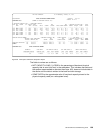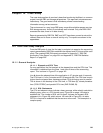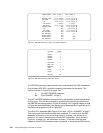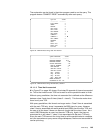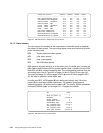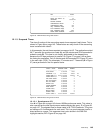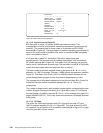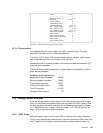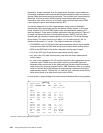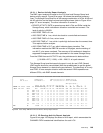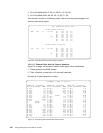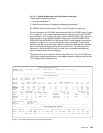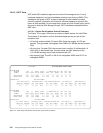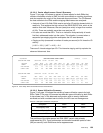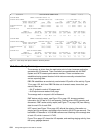
Case Study 147
Figure 66. DB2 PM Accounting Buffer Pool Summary
12.1.4 Conclusions
This example shows a very complex and heavy read-only query. Five-way
parallelism has been used to reduce elapsed time.
The query is CPU bound with complex stage 2 type predicates, which access
many pages but produce a small result set of 100 rows.
Sequential prefetch, dynamic prefetch, and sequential reads are executed. I/O
response time is excellent.
The query could probably benefit from a higher degree of parallelism or from a
faster central processor.
Summary of I/O operations
Sequential prefetch requests: 164649
Dynamic prefetch requests: 26065
Total prefetch requests: 190714
Total synchronous reads: 19559
Total I/O requests: 210273
Average I/O per second: 93
12.2 Storage Server Analysis
From the storage server analysis point of view, the first activity, in such a case
study, is to eliminate unnecessary data from large RMF and IXFP reports. After
the data has been discarded, you apply the methodology described in Chapter
11.2, “RMF Monitoring” on page 124, and Chapter 11.3, “IXFP Monitoring” on
page 135 to access the relevant information.
12.2.1 RMF Views
RMF generates a report set for each LPAR. In each set, the cache subsystem
activity report displays the same common view over all sharing LPARs at the LCU
level. Therefore, the process of extracting data to analyze is mainly based on
TOT4K TOTAL
--------------------- --------
BPOOL HIT RATIO (%) 2 E
GETPAGES 6135875
BUFFER UPDATES 48
SYNCHRONOUS WRITE 0
SYNCHRONOUS READ 19559 F
SEQ. PREFETCH REQS 164649 G
LIST PREFETCH REQS 0 H
DYN. PREFETCH REQS 26065 I
PAGES READ ASYNCHR. 5943947 J
HPOOL WRITES 0
HPOOL WRITES-FAILED 0
PAGES READ ASYN-HPOOL 0
HPOOL READS 0
HPOOL READS-FAILED 0



